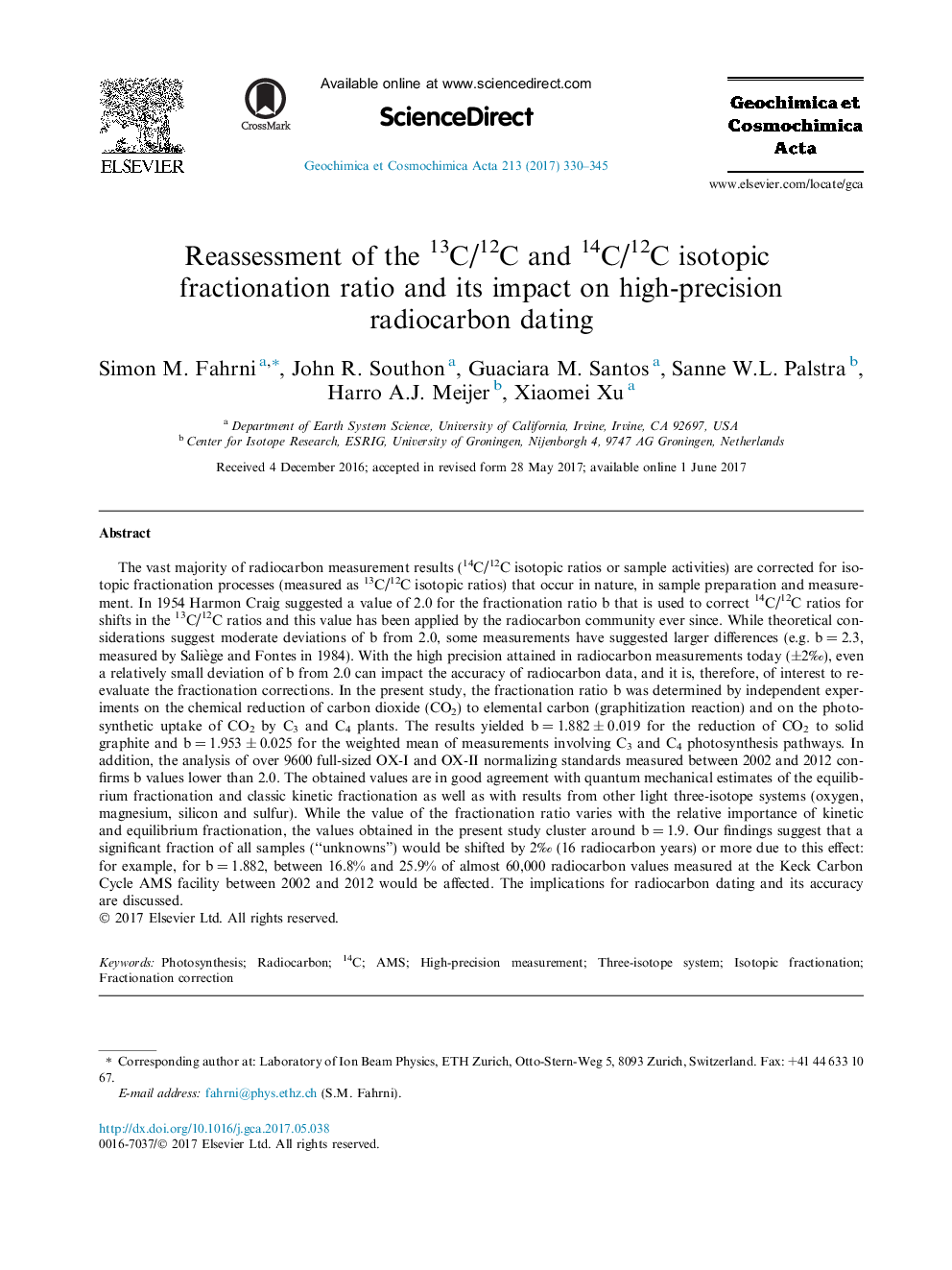| Article ID | Journal | Published Year | Pages | File Type |
|---|---|---|---|---|
| 5783336 | Geochimica et Cosmochimica Acta | 2017 | 16 Pages |
The vast majority of radiocarbon measurement results (14C/12C isotopic ratios or sample activities) are corrected for isotopic fractionation processes (measured as 13C/12C isotopic ratios) that occur in nature, in sample preparation and measurement. In 1954 Harmon Craig suggested a value of 2.0 for the fractionation ratio b that is used to correct 14C/12C ratios for shifts in the 13C/12C ratios and this value has been applied by the radiocarbon community ever since. While theoretical considerations suggest moderate deviations of b from 2.0, some measurements have suggested larger differences (e.g. b = 2.3, measured by Saliège and Fontes in 1984). With the high precision attained in radiocarbon measurements today (±2â°), even a relatively small deviation of b from 2.0 can impact the accuracy of radiocarbon data, and it is, therefore, of interest to re-evaluate the fractionation corrections. In the present study, the fractionation ratio b was determined by independent experiments on the chemical reduction of carbon dioxide (CO2) to elemental carbon (graphitization reaction) and on the photosynthetic uptake of CO2 by C3 and C4 plants. The results yielded b = 1.882 ± 0.019 for the reduction of CO2 to solid graphite and b = 1.953 ± 0.025 for the weighted mean of measurements involving C3 and C4 photosynthesis pathways. In addition, the analysis of over 9600 full-sized OX-I and OX-II normalizing standards measured between 2002 and 2012 confirms b values lower than 2.0. The obtained values are in good agreement with quantum mechanical estimates of the equilibrium fractionation and classic kinetic fractionation as well as with results from other light three-isotope systems (oxygen, magnesium, silicon and sulfur). While the value of the fractionation ratio varies with the relative importance of kinetic and equilibrium fractionation, the values obtained in the present study cluster around b = 1.9. Our findings suggest that a significant fraction of all samples (“unknowns”) would be shifted by 2â° (16 radiocarbon years) or more due to this effect: for example, for b = 1.882, between 16.8% and 25.9% of almost 60,000 radiocarbon values measured at the Keck Carbon Cycle AMS facility between 2002 and 2012 would be affected. The implications for radiocarbon dating and its accuracy are discussed.
